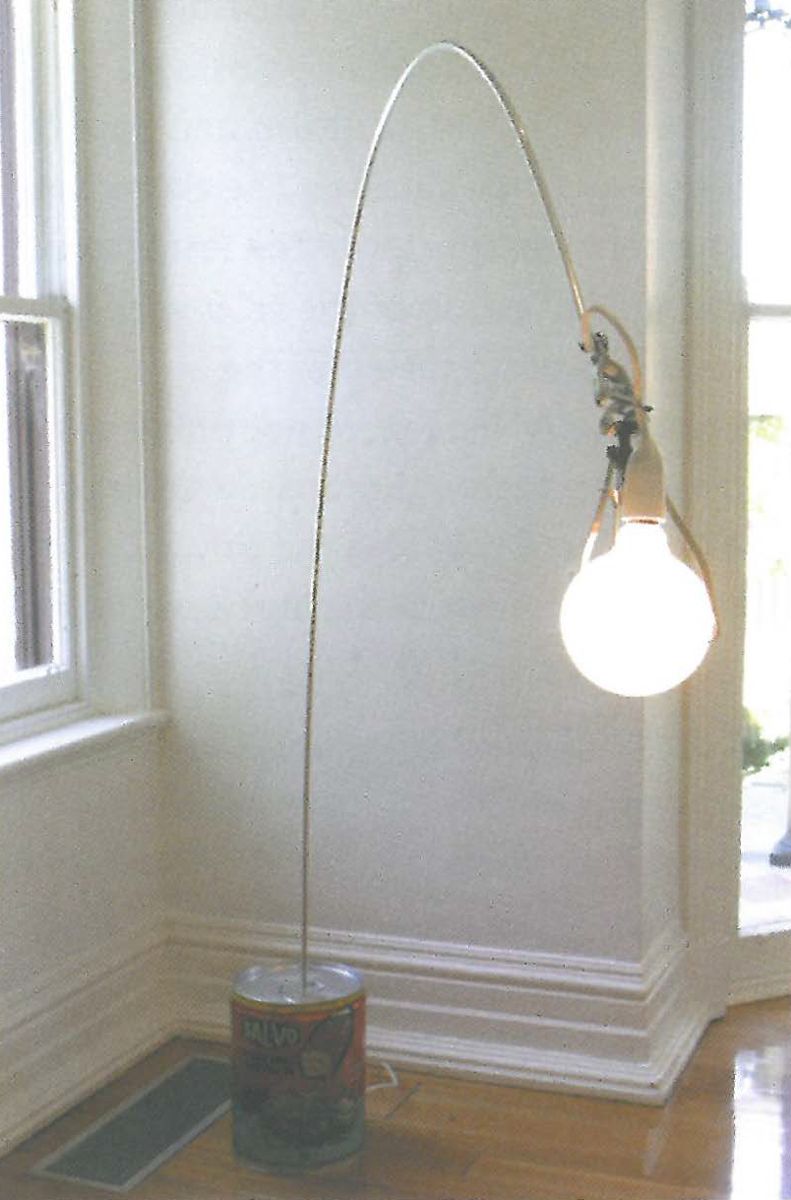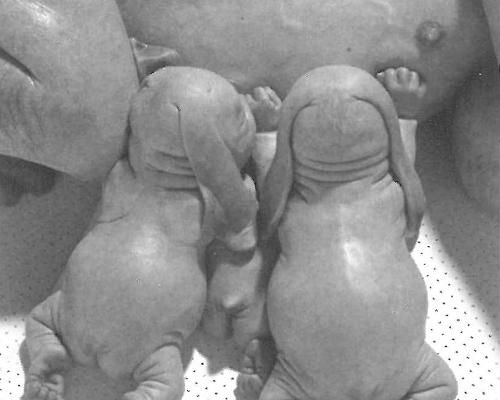
Recycology brings together furniture and domestic objects by Jan Flook, many paying tongue-in-cheek homage to the canon of modern design. Though all the works in the exhibition use everyday and recycled materials to new ends, it is three lamps that stand out.
Salvo (2002) is a witty reworking of the canonical Arco Lamp (1962). It mimics the grand curve of the original with an aluminium rod attached to a salvaged gripping mechanism and crocodile clip to hold a large exposed lightbulb. Replacing the Carrara Marble base that balances Castiglioni's classic is a used Italian vegetable oil drum. Salvo, the brand-name of the oil, is also the fond nickname for that temple of recycling haunted by artists – the Salvation Army store.
A more poetic meaning comes from the title too - the vivid image of a projectile bomb exploding mid-air, giving a new and compellingly figurative meaning to its curved form ending in an explosion of light. The drum still bears its garish label advertising that the oil is 'of the highest quality.' The joke is clever – forcing to compare the claim of this everyday foodstuff to the similar rhetoric of Italian design from which Flook quotes.
It is also a claim appropriate to the flawless manufacture of Flook's work. Because the pieces convincingly mime the slick precision of modern design, despite their scrapyard sources, they are more than simply an ironic appropriation of famous precursors. By foregrounding the former function of his materials (from the wall labels we discover that his materials include Ford Falcon XF Mufflers, photocopy rods and an Arcronite sink) Flook lets his materials speak, giving voice to the often silent influence of industrial aesthetics in twentieth century design.

Another powerful source for modern design, 'the East', is mined in Takeaway (2002). This work is a popular culture twist on the rice paper lamps of Isamu Noguchi, those oft-imitated classics that have become an Ikea staple. Around a long narrow paper lantern hangs a fragile suspended mobile of wooden chopsticks, and on the lamp itself Flook has collaged the Asian Takeaway listings from the Yellow Pages. The result has a self-consciously humorous and contemporary take on orientalism.
Lily White (2001) also owes its title to a product brand-name, this time of the disposable plastic cups from which Flook has constructed its shade. The result is delicately sculptural, casting disks of light and shadow through the translucent plastic. Quoting the tripod design of Philippe Starck's Rosy Angelis Lamp (1994), Lily White lives up to its title – this is design that is pure and clean.
But is it Green? The artist claims so, describing that how his work acknowledges the finite nature of raw materials and questions our voracious consumption by rethinking what we discard. However, the aesthetic of his work denies such a reading – these are finely crafted objects that celebrate the very same values of flawless finish and precision so central to modern design. In fact Flook's work would not at all be out of place in Wallpaper* magazine, that super slick nineties-style bible that 'rediscovered' so many mid-century designers. Putting the dubious environmental agenda aside, Flook does successfully make us reconsider commonplace objects and materials. And perhaps this is what Recycology is – convincing us that everything old is new again.












